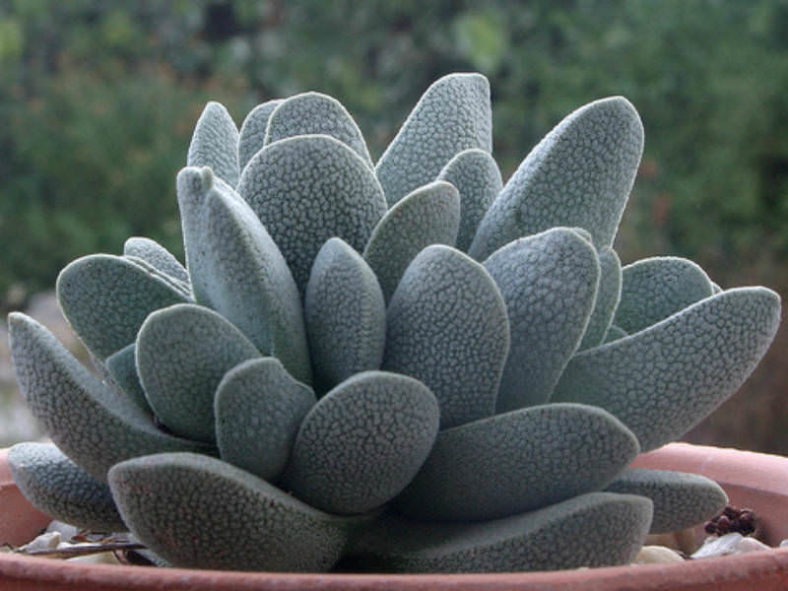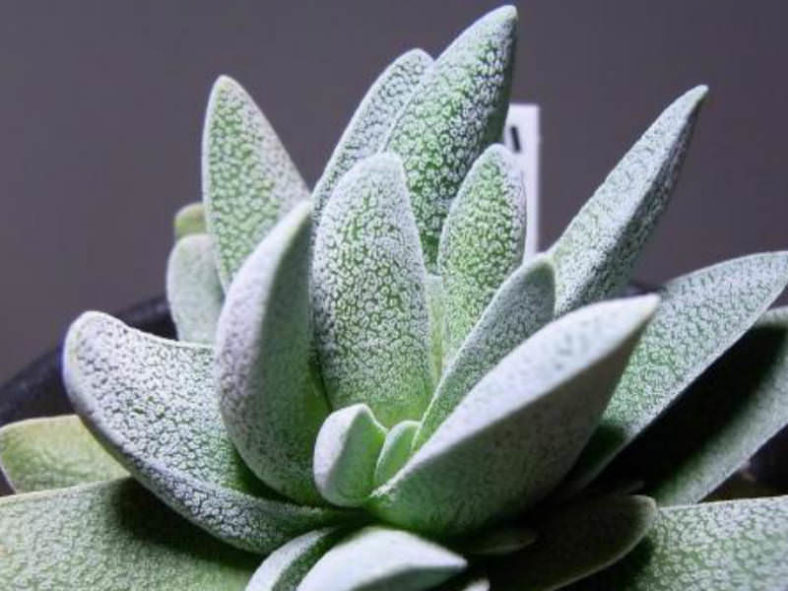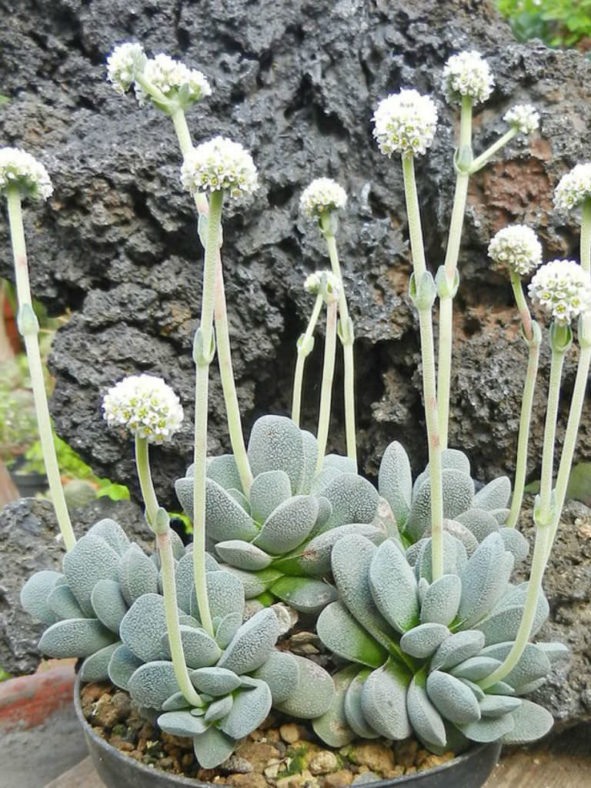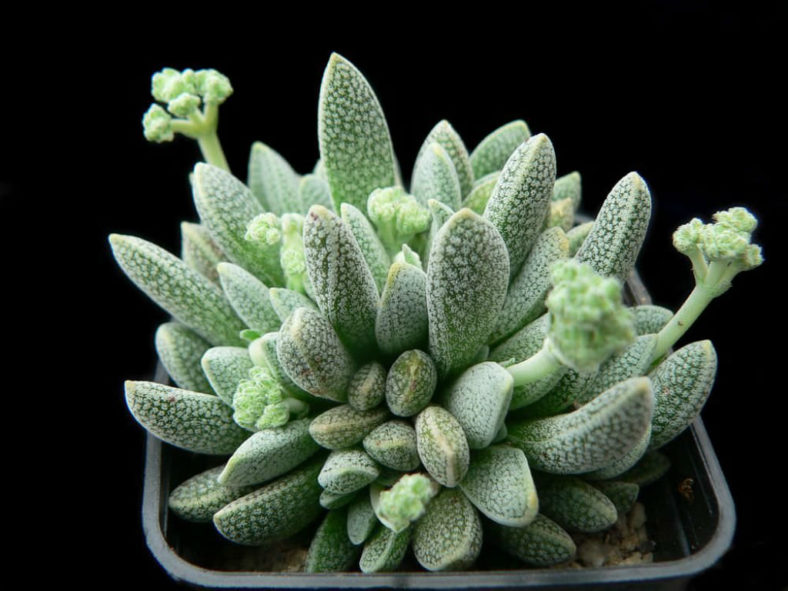Scientific Name
Crassula tecta Thunb.
Common Name(s)
Lizard Skin Crassula, Lizard Skin
Synonym(s)
Crassula decipiens
Scientific Classification
Family: Crassulaceae
Subfamily: Crassuloideae
Genus: Crassula
Etymology
The specific epithet "tecta" (pronounced "TEK-tuh") means "covered, concealed, hidden" and refers to how the leaves of this species overlap like tiles.
Origin
Crassula tecta is native to South Africa (Cape Province).
Description
Crassula tecta is an attractive, small succulent that forms rosettes of thick, fleshy, grey-green leaves covered with white, irregularly shaped papillae, giving them a grey or whitish appearance. It can grow up to 2 inches (5 cm) tall and is often much branched from the base. The leaves are variable in size and shape, measuring up to 1.4 inches (3.5 cm) long and 0.6 inches (1.5 cm) wide.
The flowers are tiny, 5-petalled white cups with yellow anthers, and appear in summer.

Hybrids of Crassula tecta
How to Grow and Care for Crassula tecta
Hardiness: USDA hardiness zone 9b to 11b: from 25°F (-3.9°C) to 50°F (10°C).
Crassulas are easy to grow but susceptible to mealybugs and fungal diseases. As with all succulents, overwatering is fatal, so err on the side of too dry rather than too wet. Never let your plant sit in water. If you water from beneath by allowing the plant to sit in a saucer, ensure you pour off any excess water after a few minutes.
These succulents are generally started by division, offsets, or leaf cuttings. Crassulas can be easily propagated from a single leaf. Place leaves into a potting mix for succulents and cover the dish until they sprout.
Repot as needed, preferably during the warm season. To repot your Crassula, ensure the soil is dry before repotting, then gently remove the pot. Knock away the old soil from the roots, removing any rotted or dead roots. Treat any cuts with a fungicide. Place the plant in its new pot and backfill with potting soil, spreading the roots as you repot. Leave the plant dry for a week or so, then water lightly to reduce the risk of root rot.
See more at How to Grow and Care for Crassula.
Links
- Back to genus Crassula
- Succupedia: Browse succulents by Scientific Name, Common Name, Genus, Family, USDA Hardiness Zone, Origin, or cacti by Genus
Photo Gallery
Click on a photo to see a larger version.


